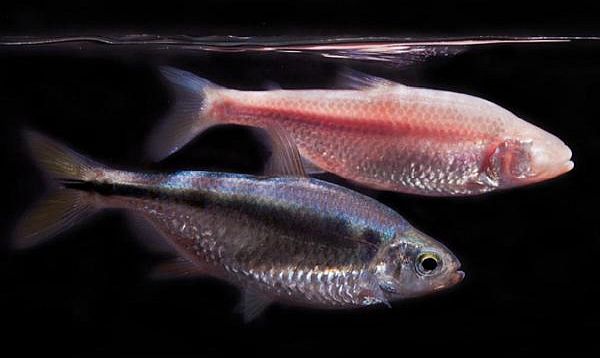Two new studies of Mexico's blind cave fish, Astyanax mexicanus, have offered new clues as to why some animals sleep more than others. The research could aid scientists' understanding of sleep disorders in humans.
The tiny Mexican tetra exists in two forms. One variant is eyeless and lives in complete darkness. The other variant can see and mostly hangs out in the surface water of rivers. The cave-dwellers sleep much less than their river-dwelling peers.
While other cave-dwelling fish exist, few have relatives still living under more common circumstances. Thus, the species offers scientist a unique opportunity to study how species evolve and adapt to more extreme conditions.
One study looked at the relationship between neurological distinctions and sleep patterns - the mechanics behind sleep loss. The other study focused on developmental differences between the two variants.
The first study showed a neuropeptide called Hypocretin could explain the species lack of sleep. Diminished Hypocretin levels have been linked with narcolepsy in humans. Analysis showed Mexican tetras produce large amounts of Hypocretin.
"These findings suggest that differences in Hypocretin production may explain variation in sleep between animal species, or even between individual people," Alex Keene, an associate professor and researcher at Florida Atlantic University's Brain Institute, said in a news release. "It may also provide important insight into how we might build a brain that does not need to sleep."
The second study showed that early in the tetra's development, while still in an embryonic state, the same genetic mechanism that prevents eye formation also controls the development of cells linked to the production of Hypocretin.
"We discovered a higher number of HCRT cells in the brains of cave-dwelling fish compared to surface-dwellers," said Alexandre Aliť, a researcher at the French National Center for Scientific Research. "By manipulating the numbers of HCRT neurons, we were able to link these to increased activity levels."
In follow-up experiments, researchers found they could induce sleep in cave fish by inhibiting HCRT signaling, both through drug delivery and genetic engineering.
Both studies were published in the journal eLife. Scientists hope their findings could inspire new treatment strategies for sleep disorders like insomnia in humans.
Original article


